
How to Use Adafruit HTU21D-F Temperature & Humidity Sensor: Examples, Pinouts, and Specs
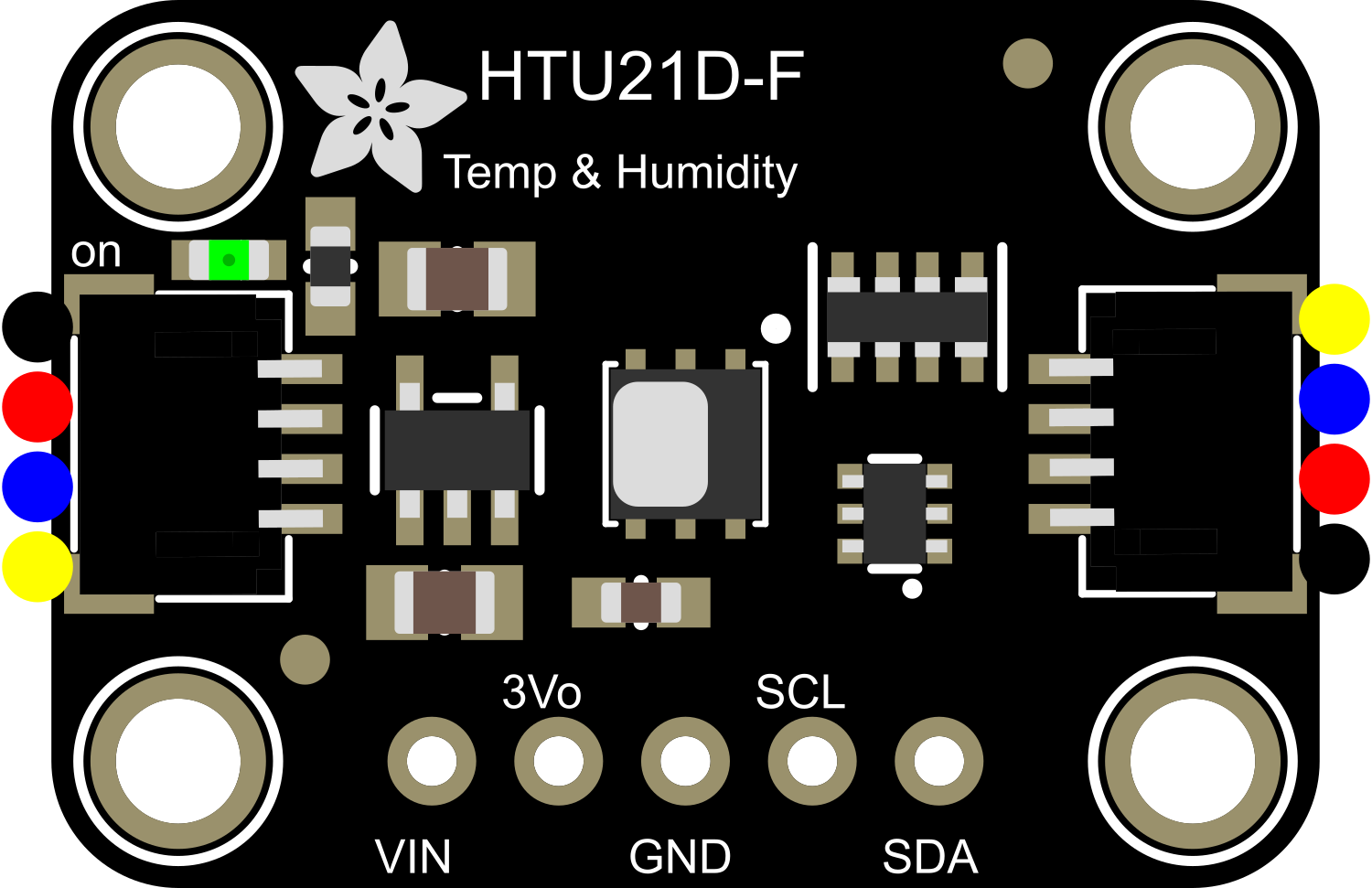
 Design with Adafruit HTU21D-F Temperature & Humidity Sensor in Cirkit Designer
Design with Adafruit HTU21D-F Temperature & Humidity Sensor in Cirkit DesignerIntroduction
The Adafruit HTU21D-F is a high-precision digital temperature and humidity sensor module that provides reliable and accurate readings. It is based on the HTU21D sensor by TE Connectivity. This sensor is ideal for a wide range of applications including weather stations, climate control systems, and environmental monitoring projects. Its small form factor and low power consumption make it suitable for portable and battery-powered applications.
Explore Projects Built with Adafruit HTU21D-F Temperature & Humidity Sensor
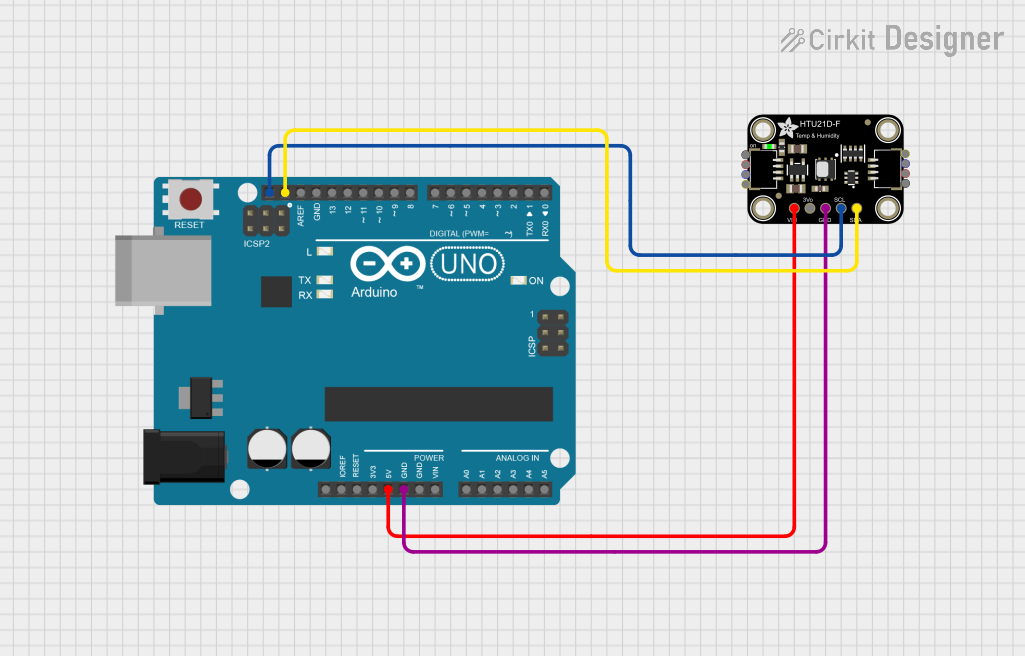
 Open Project in Cirkit Designer
Open Project in Cirkit Designer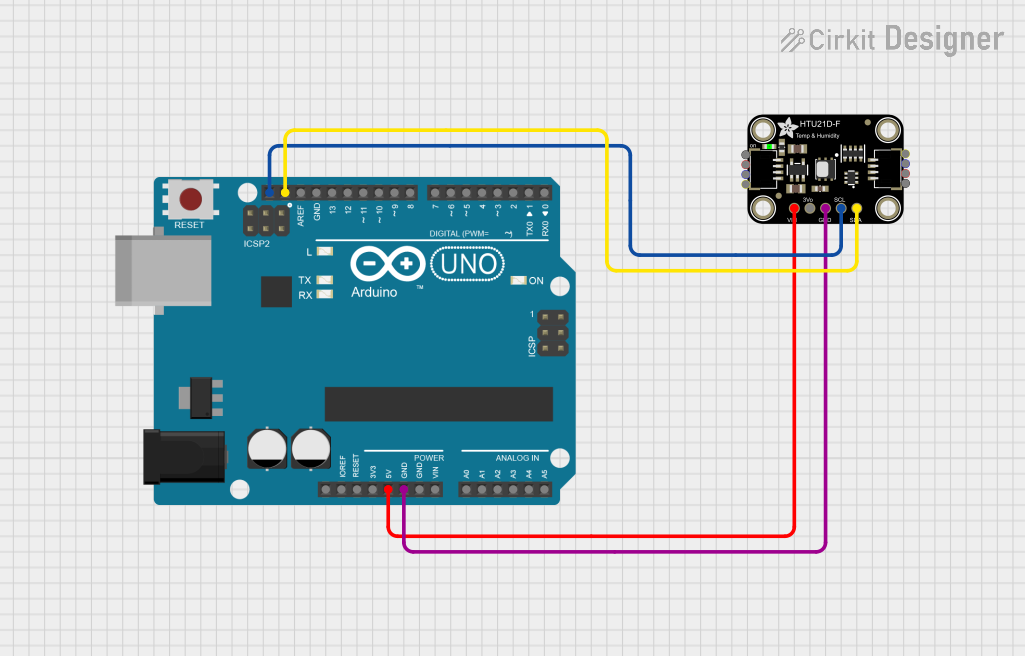
 Open Project in Cirkit Designer
Open Project in Cirkit Designer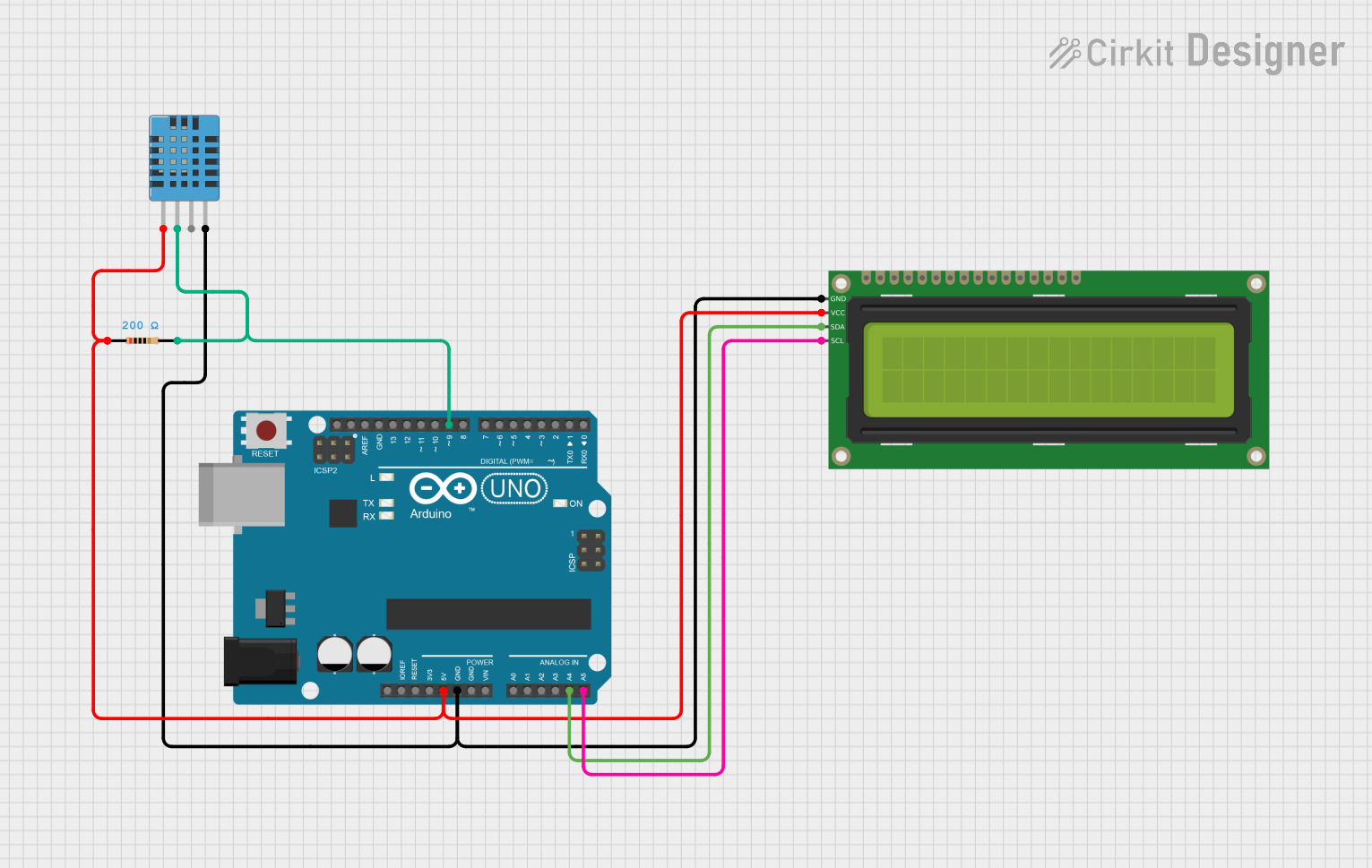
 Open Project in Cirkit Designer
Open Project in Cirkit Designer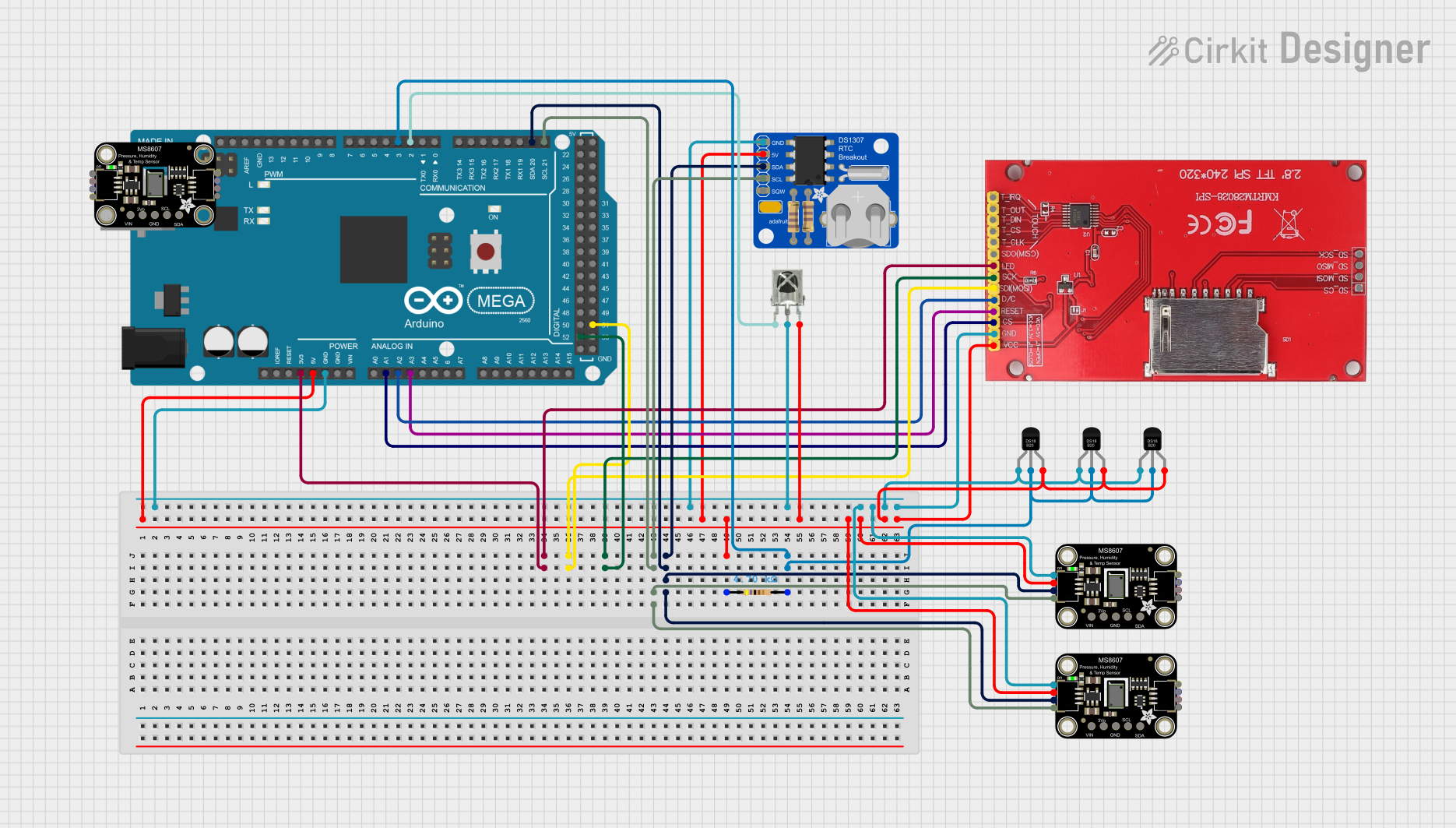
 Open Project in Cirkit Designer
Open Project in Cirkit DesignerExplore Projects Built with Adafruit HTU21D-F Temperature & Humidity Sensor

 Open Project in Cirkit Designer
Open Project in Cirkit Designer
 Open Project in Cirkit Designer
Open Project in Cirkit Designer
 Open Project in Cirkit Designer
Open Project in Cirkit Designer
 Open Project in Cirkit Designer
Open Project in Cirkit DesignerTechnical Specifications
Key Features
- Temperature Range: -40°C to +125°C
- Humidity Range: 0-100% RH
- Temperature Accuracy: ±0.3°C (max)
- Humidity Accuracy: ±2% RH (max)
- Operating Voltage: 3.3V to 5V
- Interface: I2C
- I2C Address: 0x40 (default)
Pin Configuration
| Pin Number | Name | Description |
|---|---|---|
| 1 | VDD | Power supply (3.3V to 5V) |
| 2 | GND | Ground |
| 3 | SDA | I2C Data |
| 4 | SCL | I2C Clock |
Usage Instructions
Connecting to an Arduino UNO
- Connect the VDD pin to the 3.3V output on the Arduino UNO.
- Connect the GND pin to one of the GND pins on the Arduino UNO.
- Connect the SDA pin to the A4 pin (SDA) on the Arduino UNO.
- Connect the SCL pin to the A5 pin (SCL) on the Arduino UNO.
Arduino Library and Code Example
Before you can use the HTU21D-F with an Arduino, you need to install the Adafruit HTU21DF library. You can install it using the Arduino Library Manager by searching for "Adafruit HTU21DF."
Here is a simple example code to get you started:
#include <Wire.h>
#include <Adafruit_HTU21DF.h>
// Create an instance of the Adafruit_HTU21DF class
Adafruit_HTU21DF htu = Adafruit_HTU21DF();
void setup() {
Serial.begin(9600);
Serial.println("HTU21D-F test");
if (!htu.begin()) {
Serial.println("Couldn't find sensor!");
while (1);
}
}
void loop() {
Serial.print("Temp: "); Serial.print(htu.readTemperature());
Serial.print(" C\tHumidity: "); Serial.print(htu.readHumidity());
Serial.println(" %");
delay(500);
}
Important Considerations and Best Practices
- Ensure that the power supply is within the specified range (3.3V to 5V).
- The sensor should not be subjected to condensing environments.
- Long wires can affect the I2C communication; keep the wires as short as possible.
- Use pull-up resistors on the SDA and SCL lines if multiple I2C devices are connected to the same bus.
Troubleshooting and FAQs
Common Issues
- Sensor not detected: Ensure that the wiring is correct and that the sensor is properly powered.
- Inaccurate readings: Check for any sources of heat or moisture that could be affecting the sensor. Ensure that the sensor has had sufficient time to acclimate to the environment.
FAQs
Q: Can the HTU21D-F sensor be used with a 5V system? A: Yes, the sensor can be directly connected to a 5V system.
Q: How can I calibrate the sensor? A: The HTU21D-F comes factory-calibrated. However, for critical applications, you may need to perform field calibration. Refer to the sensor's datasheet for detailed calibration procedures.
Q: Is the sensor waterproof? A: No, the HTU21D-F is not waterproof and should be protected from condensation and water exposure.
For further assistance, consult the Adafruit HTU21D-F datasheet and the Adafruit support forums.